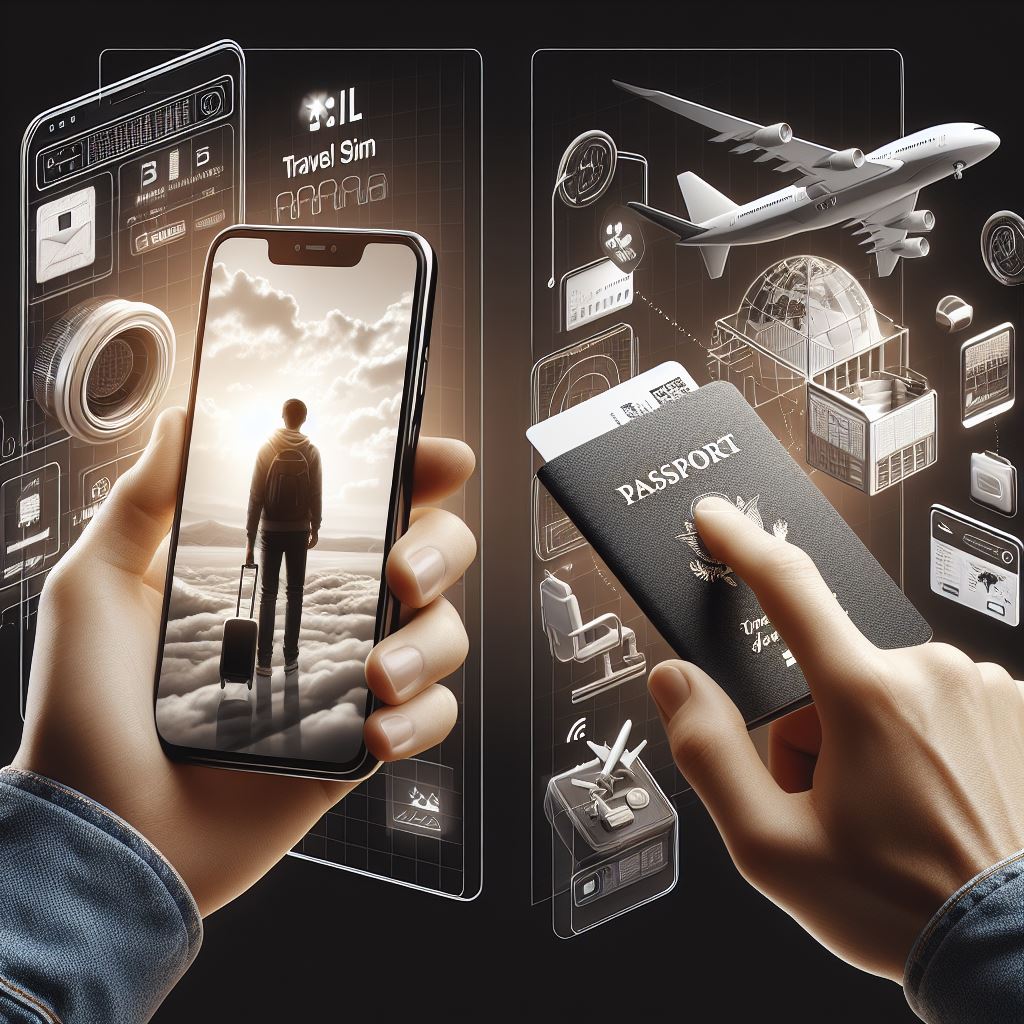What is the best eSIM for travel?
The best eSIM for travellers can vary based on personal preferences, travel destinations, and specific needs. However, several eSIM providers cater specifically to travellers and offer flexible plans with global coverage:
The Top 10 eSIM providers for international travel
- Truphone: Known for its global coverage across multiple countries, Truphone offers data plans tailored for travelers. It allows users to purchase data-only plans or voice and data bundles.
- Ubigi: Ubigi provides eSIM data plans in various countries and regions, offering flexibility and convenience for travelers needing data connectivity without changing physical SIM cards.
- Airalo: Airalo offers eSIM data plans for over 190 countries, providing travelers with affordable and easy-to-purchase data plans directly from their app. Easy to install.
- GigSky: GigSky specializes in eSIM data plans for international travelers and offers coverage in multiple countries, allowing users to buy data plans as needed without physical SIM card changes.
- TravSIM: With coverage in numerous countries, TravSIM offers eSIM plans suitable for travelers needing data connectivity and can be easily managed through their app.
- Holafly: Perfect for unlimited data
- GlobaleSIM: Global eSIMs offer several unique features and benefits that set them apart from traditional SIM cards and even standard eSIMs
- BNESIM: a comprehensive app designed to cater to the connectivity needs of traveler’s, business individuals, remote workers, and various devices.
- Airhub: with over 250 eSIMs to choose from and awesome rates.
- AloSIM: easy to install and prepaid, on-demand local carrier data in 170+ countries

When choosing an eSIM provider for travel, consider factors like coverage in your destinations, data allowances, ease of purchase and activation, compatibility with your device, and pricing structures. It’s advisable to review the specific offerings and terms of service to find the best fit for your travel needs.
What are the differences between the companies eSIM for traveler?
Different companies offering eSIM services for travelers often have varying features, coverage, pricing structures, and plans. Here are some key differences you might find among various eSIM providers catering to travelers:
- Coverage: Companies may differ in the number of countries or regions they cover. Some might offer global coverage, while others may focus on specific regions or countries.
- Data Plans: Variations exist in data plan options, including data allowances, validity periods, speed tiers, and pricing structures. Some providers might offer more flexible or affordable plans compared to others.
- Activation Process: The ease and speed of activating an eSIM can vary. Some providers offer instant activation directly from an app, while others might require more steps or verification processes.
- Compatibility: Not all eSIM providers are compatible with every device. Some might support a wider range of devices, including smartphones, tablets, smartwatches, or other IoT devices, while others might have more limited compatibility.
- Additional Services: Companies might offer additional services such as voice calling, SMS, or bundled packages that include multiple services besides data.
- Customer Support: The quality and accessibility of customer support can differ among providers. Some might offer 24/7 support, multilingual assistance, or better troubleshooting options.
- Price and Payment Methods: Pricing structures can vary significantly. Some providers offer pay-as-you-go models, while others might have subscription-based plans. Additionally, accepted payment methods might differ, ranging from credit cards to various digital payment options.
- App Experience: The user experience and functionality of the provider’s app or online platform for managing the eSIM and purchasing plans can vary in terms of ease of use and available features.
When choosing an eSIM provider for travel, consider factors such as your destination countries, data needs, device compatibility, ease of activation, pricing, and additional services offered. Comparing different providers based on these factors can help you find the best fit for your travel requirements.

What are the types of travellers that need an eSIM?
Several types of traveler’s can benefit from using an eSIM:
- Frequent Flyers: Those who travel frequently, whether for business or leisure, can benefit from the convenience of an eSIM. It saves the hassle of constantly swapping SIM cards and offers seamless connectivity across different countries.
- Business Traveler’s: Professionals traveling for work often require reliable internet connectivity for emails, video conferences, and accessing work-related documents. An eSIM ensures they stay connected without relying on potentially expensive roaming services.
- Digital Nomads: Individuals who work remotely and travel extensively can find eSIMs essential for staying connected to work and personal networks while moving from one location to another.
- Adventure Travelers: Travelers exploring remote or off-the-beaten-path locations may find eSIMs valuable for maintaining connectivity in areas where traditional SIM cards might be difficult to obtain or have limited coverage.
- Backpackers and Budget Travelers: Those on extended trips or traveling on a budget can benefit from eSIMs, as they often offer more cost-effective data plans compared to roaming services offered by traditional carriers.
- Multi-Country Travelers: Travelers visiting multiple countries or regions within a single trip find eSIMs advantageous as they can access local data plans without needing to purchase and swap multiple SIM cards.
- Emergency Connectivity: Having an eSIM as a backup ensures access to data even if the primary SIM card or network encounters issues, providing a reliable option for emergency connectivity.
Ultimately, eSIMs cater to a wide range of traveler’s, offering flexibility, cost-effectiveness, and convenience in staying connected while on the move.

What are the benefits travellers have for using an eSIM?
Travelers can enjoy several benefits from using an eSIM:
- Global Connectivity: eSIMs offer the convenience of accessing data plans in multiple countries without the need to switch physical SIM cards. This ensures seamless connectivity while traveling internationally.
- Convenience: Instead of purchasing local SIM cards or dealing with expensive roaming fees, travelers can easily purchase and activate eSIM data plans online, often before they depart or upon arrival at their destination.
- Cost Savings: eSIMs often provide more affordable data plans compared to traditional roaming services offered by carriers, allowing traveler’s to stay connected without breaking the bank.
- Flexibility: With an eSIM, traveler’s can choose data plans that suit their needs—whether it’s for a short trip or an extended stay—and activate or deactivate plans as needed without contractual obligations.
- No Physical SIM Card Swapping: eSIMs eliminate the hassle of physically swapping SIM cards when entering different countries, reducing the risk of losing or damaging SIM cards and the associated tray mechanisms.
- Multiple Profiles: Some devices with eSIM support allow users to have multiple eSIM profiles, enabling travelers to switch between different carriers or plans without needing multiple physical SIM cards.
- Emergency Connectivity: Having an eSIM as a backup ensures travelers have access to data even if their primary SIM card encounters issues or if they are in an area with poor network coverage.
- Compatibility: Many modern smartphones, tablets, and wearable devices support eSIM technology, allowing travelers to take advantage of this feature with their existing devices.
Overall, eSIMs provide traveler’s with a convenient, cost-effective, and flexible solution for staying connected while exploring different destinations around the world.
What travel sectors need to use an eSIM?
Several travel sectors benefit from using eSIM technology due to its convenience, flexibility, and global connectivity:
- Business Travel: Professionals traveling for business often require reliable internet connectivity for work-related tasks such as emails, video conferences, and accessing corporate networks. eSIMs provide seamless connectivity without the hassle of changing physical SIM cards or dealing with expensive roaming charges.
- Leisure Travel: Vacationers and tourists can benefit from eSIMs for staying connected while exploring different destinations. It offers the convenience of purchasing and activating data plans on the go without relying on local SIM cards.
- Frequent Travelers: Individuals who frequently travel, whether domestically or internationally, find eSIMs advantageous as they eliminate the need to switch SIM cards or deal with multiple carriers. It’s a convenient solution for maintaining connectivity across various travel destinations.
- Digital Nomads: People who work remotely while traveling extensively rely on consistent internet access for work purposes. eSIMs enable digital nomads to stay connected across different locations without interruptions.
- Adventure Travel: Travelers exploring remote or off-the-beaten-path locations may find eSIMs valuable, ensuring connectivity in areas where traditional SIM cards might be challenging to obtain or have limited coverage.
- Multi-Country Trips: Travelers embarking on trips covering multiple countries or regions within a short span find eSIMs advantageous. They can access local data plans without the hassle of purchasing and managing multiple physical SIM cards.
- Emergency Connectivity: Having an eSIM as a backup ensures travelers have access to data even if their primary SIM card encounters issues or if they are in areas with poor network coverage, providing a reliable option for emergency connectivity.
In essence, eSIM technology caters to a wide range of travel sectors, offering flexibility, cost-effectiveness, and convenience for staying connected while on the move.

How do I know that my phone is compatible with eSIM?
Determining if your phone is compatible with eSIM involves checking specific indicators or settings. Here’s how you can find out:
- Check Settings Menu: Go to your phone’s settings and look for the “Cellular” or “Mobile Network” section. If your phone supports eSIM, there might be an option specifically mentioning “eSIM,” “Add Cellular Plan,” or “Carrier.”
- Review Phone Specifications: Check your phone’s manual or visit the manufacturer’s website. Look for information regarding eSIM compatibility for your specific device model. Manufacturers often provide detailed specifications listing eSIM support.
- Contact Your Carrier: Reach out to your mobile carrier or service provider. They can verify if your device supports eSIM technology and guide you through the process of setting up an eSIM if your phone is compatible.
- Check Physical SIM Tray: In some cases, phones with eSIM functionality might have a SIM card slot for a physical SIM card and an additional space or indication for an eSIM. Inspect your phone’s SIM tray to see if it has this feature.
- Online Resources: There are websites and databases that compile information about devices supporting eSIM technology. You can search for your phone model to confirm its compatibility with eSIM.
- Try adding a Cellular Plan: If your phone is eSIM-compatible, there should be an option in the settings to add a cellular plan using an eSIM. Accessing this option confirms that your device supports eSIM functionality.
Always ensure to verify compatibility through multiple methods, such as checking settings, reviewing official specifications, contacting your carrier, or inspecting physical features of your phone, to confirm if your device supports eSIM technology.
What is the eSIM for travellers market size?
The eSIM market was showing substantial growth, driven by increasing smartphone adoption, demand for connected devices, and the rising trend of remote work and travel. However, I don’t have real-time or future market size data beyond that point.
In recent years, the eSIM market had been projected to expand significantly due to the convenience it offers travelers in terms of connectivity across different countries without the need to physically change SIM cards. The market growth was fueled by various factors, including:
- Increasing Travel: As travel became more accessible and frequent, especially with the rise of digital nomadism and remote work, the demand for convenient connectivity solutions like eSIMs rose.
- Smartphone and Device Adoption: More smartphones, tablets, and wearable devices have been equipped with eSIM technology, expanding the potential user base for eSIM services.
- Advantages for Traveler’s: The benefits of cost-effectiveness, flexibility in choosing data plans, and the convenience of not having to swap physical SIM cards appealed to various types of travelers.
- Industry Initiatives: Telecom operators, device manufacturers, and eSIM providers have been actively promoting eSIM adoption, fostering growth in the market.
Market research reports and forecasts prior to 2022 estimated the eSIM market to experience considerable growth, with projections for a significant increase in revenue over the coming years. The exact market size and growth rate would likely vary based on factors such as technological advancements, regulatory changes, and evolving consumer behaviors.
For the most up-to-date information on the current market size and trends in the eSIM for traveler’s segment, I’d recommend referring to industry reports, market research studies, or analysis from reliable sources specialising in telecommunications and mobile technology.
Please sign up for our weekly IoT Newsletter to have these articles direct to your inbox. Thanks for reading 😉

